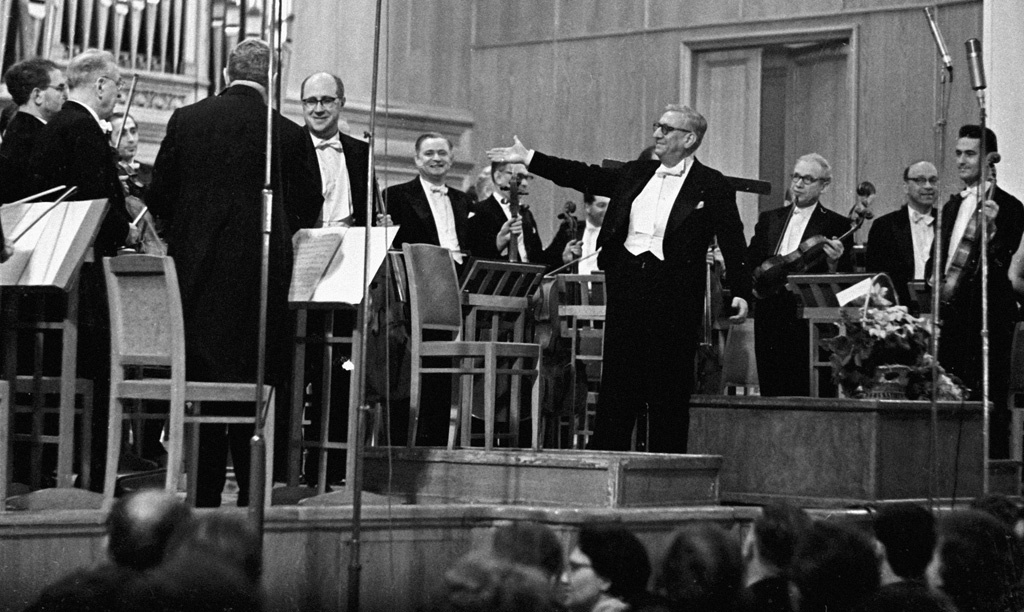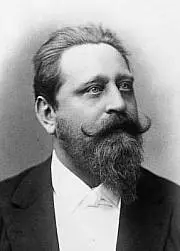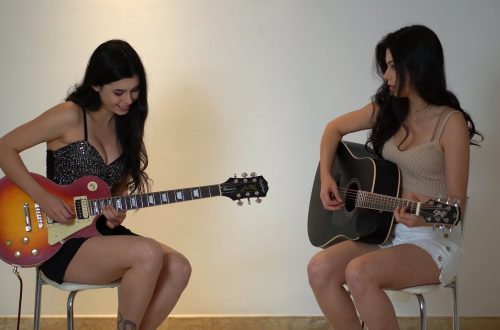
Henri Sauguet |
Contents
Henry Sauguet
real name and surname – Henri Pierre Poupard (Henri-Pierre Poupard Poupard)
French composer. Member of the French Academy of Fine Arts (1975). He studied composition with J. Cantelube and C. Keklen. In his youth he was organist at a rural cathedral near Bordeaux. In 1921, at the invitation of D. Milhaud, who became interested in his works, he moved to Paris. From the beginning of the 20s. Soge maintained close creative and friendly relations with the members of the “Six”, since 1922 he was a member of the “Arkey school”, led by E. Satie. According to Sauge, the development of his work was strongly influenced by the works of C. Debussy (in 1961 Sauge dedicated the cantata-ballet “Further than day and night” to him for mixed choir a cappella and tenor), as well as F. Poulenc and A. Honegger . Nevertheless, Soge’s first compositions are not devoid of individual features. They are distinguished by expressive melody, close to the French folk song, rhythmic sharpness. Some of his compositions were written using serial technique; experimented in the field of concrete music.
Sauguet is one of the prominent French composers of the 20th century, the author of compositions in various genres. The composer’s creative image is characterized by a strong connection of his aesthetic interests and tastes with the French national tradition, the absence of academic bias in solving artistic problems, and the deep sincerity of his statements. In 1924, Soge hastily made his debut as a theatrical composer with a one-act buff opera (to his own libretto) The Sultan of the Colonel. In 1936 he completed work on the opera The Convent of Parma, which had begun as early as 1927. For the Ballets Russes troupe of S. P. Diaghilev, Sauge wrote the ballet The Cat (based on the works of Aesop and La Fontaine; staged in 1927 in Monte Carlo; choreographer J. Balanchine), which brought great success to the composer (in less than 2 years, about 100 performances were given; the ballet is still considered one of the best works of Sauge). In 1945, the premiere of Sauguet’s ballet The Fair Comedians (dedicated to E. Satie) took place in Paris, one of his most popular musical stage works. Author of a number of symphonic works. His Allegorical Symphony (in the spirit of a lyrical pastoral for symphony orchestra, soprano, mixed and children’s choirs) was staged in 1951 in Bordeaux as a colorful choreographic performance. In 1945 he wrote “Redemptive Symphony”, dedicated to the memory of the victims of the war (performed in 1948). Sauge owns chamber and organ music, music for many French films, including the satirical comedy A Scandal at Clochemerle. In his music for film, radio and television, he successfully uses all kinds of electric instruments. He acted as a music critic in various Parisian newspapers. He took part in the founding of the magazine “Tout a vous”, “Revue Hebdomadaire”, “Kandid”. During World War II (2-1939), he participated in the work of the French Musical Youth Society. In 45 and 1962 he visited the USSR (his works were performed in Moscow).
I. A. Medvedeva
Compositions:
operas, including Colonel Sultan (Le Plumet du Colonel, 1924, Tp Champs-Elysées, Paris), double bass (La contrebasse, based on A. P. Chekhov’s story “Roman with Double Bass”, 1930), Parma Convent (La Chartreuse de Parme, based on the novel by Stendhal; 1939, Grand Opera, Paris), Caprices of Marianne (Les caprices de Marianne, 1954, Aix-en-Provence); ballets, incl. The Cat (La Chatte, 1927, Monte Carlo), David (1928, Grand Opera, Paris, staged by Ida Rubinstein), Night (La Nuit, 1930, London, ballet by S. Lifar), Fair comedians (Les Forains, 1945, Paris, ballet by R. Petit), Mirages (Les Mirages, 1947, Paris), Cordelia (1952, at the Exhibition of Art of the 20th Century in Paris), Lady with Camellias (La Dame aux camelias, 1957, Berlin), 5 floors (Les Cinq etages, 1959, Basel); cantatas, including Further Than Day and Night (Plus loin que la nuit et le Jour, 1960); for orchestra – symphonies, including Expiatory (Symphonie expiatoire, 1945), Allegorical (Allegorique, 1949; with soprano, mixed choir, 4-head children’s choir), INR Symphony (Symphonie INR, 1955), From the third century (Du Troisime Age, 1971); concerts with orchestra — 3 for fp. (1933-1963), Orpheus Concerto for Skr. (1953), conc. melody for incl. (1963; Spanish 1964, Moscow); chamber instrumental ensembles — 6 easy pieces for flute and guitar (1975), fp. trio (1946), 2 strings. quartet (1941, 1948), suite for 4 saxophones and Prayer organ (Oraisons, 1976); piano pieces; wok. suite at 12 verse. M. Karema for baritone and piano. “I Know He Exists” (1973), pieces for organ, romances, songs, etc.
References: Schneerson G., French music of the XX century, M., 1964, 1970, p. 297-305; Jourdan-Morliange H., Mes amis musiciens, P., (1955) (Russian translation – Zhyrdan-Morliange Z., My friends are musicians, M., 1966); Francis Poulenk, Correspondance, 1915 – 1963, P., 1967 (Russian translation – Francis Poulenc. Letters, L.-M., 1970).





